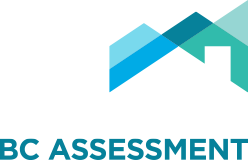Land and improvements owned by the Crown are exempt from taxation under the
Constitution Act, 1867.
Land and improvements owned by a municipality are exempt from taxation under the relevant tax statute such as the
Community Charter, the
Taxation (Rural Area) Act or the
Vancouver Charter.
Land and improvements owned by a taxing treaty First Nations are exempt under the taxation law of the First Nation.
Land and improvements owned by some other types of owners may also be exempt under specific statutes (e.g. universities are exempt under the
University Act).
If such exempt property is occupied on behalf of the exempt owner (e.g. a caretaker of a provincial park), the property will remain exempt. However, if the exempt property is occupied, but not on behalf of the exempt owner, the property is assessable in that person's name. If there is no separate exemption for the occupier, then the land is also taxable in the occupier’s name.
The assessment is based on the full market value of the property as if it were privately owned, not just on the value of the lease (or other tenure document) that allows the property to be occupied.
If the exempt owner imposes restrictions on the use of the occupied property (other than the duration of the tenure), the Assessor must take into account those restrictions when valuing the property. Not all restrictions on use affect a property’s value. Only if the restrictions affect the value of the property will the Assessor make an adjustment on account of the restrictions.
Definition of owners and occupiers
Under the
Assessment Act, an “owner” as:
• the registered owner of an estate in fee simple;
• the registered owner of a life estate (a life tenant);
• the registered holder of the last registered agreement for sale and purchase; or
• the occupier of exempt property.
Under the
Assessment Act, an “occupier” is:
• a person who is entitled to maintain an action for trespass;
• a tenure-holder in possession of land, or land and improvements, owned by a tax exempt owner (ie. the Crown, a municipality or other exempt owner);
• a person who “simply occupies” land, or land and improvements, owned by a tax exempt owner (a squatter);
• a person who is entitled to occupy a water lot under a lease or license;
• a person who is in possession of a waterlot under a tenure other than a lease or license; or
• someone who “simply occupies” a waterlot (squatter).
Indigenous reserve land
Reserve land is Crown land specifically set aside for the benefit of an Indigenous community. The area of reserve land occupied by an Indigenous community (or a member of an Indigenous community) is tax exempt. If somebody else occupies the land and is not otherwise exempt, then the area occupied will be taxable in the name of that occupier.
Paramount occupation
If an exempt property is occupied by more than one person, it will be assessed in the name of the “paramount” occupier. The “paramount” occupier is the one who has the best entitlement to occupy that property or who controls the property (i.e., is in possession of the property).
If neither of the occupiers is paramount occupier, then the property will be assessed jointly in the names of all the occupiers.
For more information, contact:
Assessment Legal
BC Assessment
400 - 3450 Uptown Blvd.
Victoria BC
V8Z 0B9
250 595-6211
Updated 11/2012
Disclaimer: Where information presented is different from legislation, legislation shall prevail.

